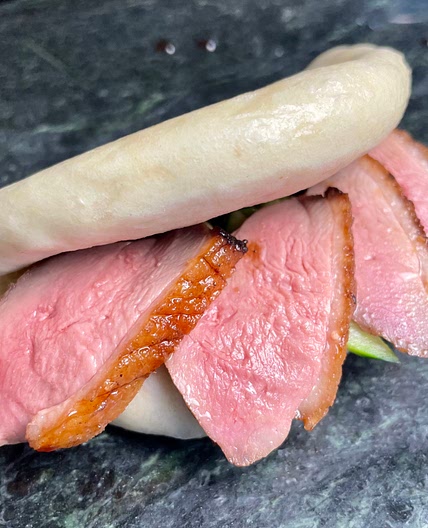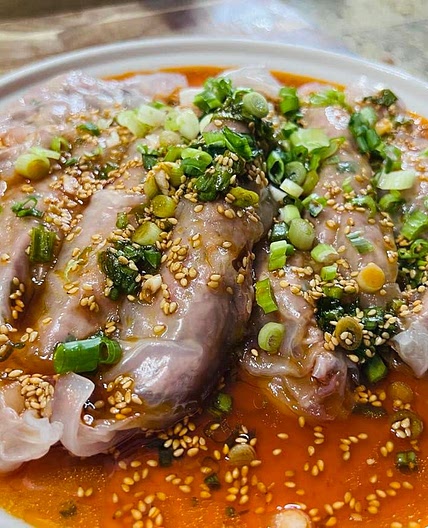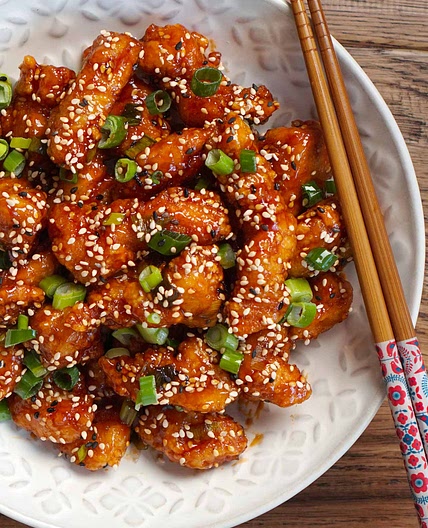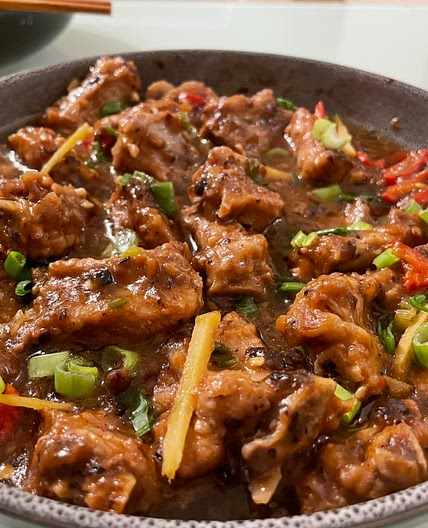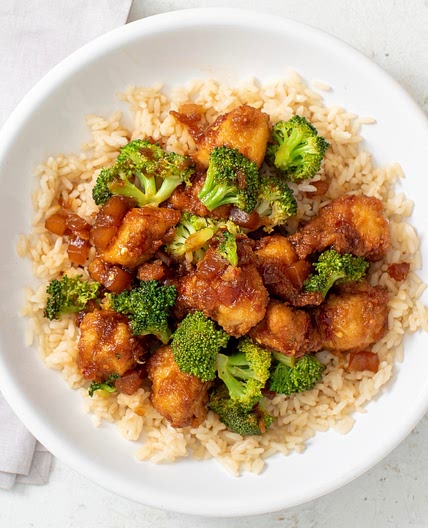By g.wong
Braised Rice Cakes (Nian Gao) with Napa Cabbage, Shiitake and Po
An easy one-pot meal that is also total comfort food. The magic happens in the final simmering when the starches released from the rice cakes combine with the liquid cooked out of the cabbage to create a velvety, luscious sauce.
Updated at: Thu, 22 Feb 2024 01:42:56 GMT
Nutrition balance score
Uh-oh! We're unable to calculate nutrition for this recipe because some ingredients aren't recognized.
Ingredients
4 servings
For the Pork
1 lbpork tenderloin
or pork shoulder, can substitute 1 lb ground pork
2 Tbsptamari
for gluten free or light soy sauce
1 tspkosher salt
For the Braised Rice Cakes
6shiitake mushrooms
reconstituted if dehydrated
1 pkgrice cake slices
frozen or dried vacuum packed
4 lbsNapa cabbage
salt
to taste
Tamari
or soy sauce, to taste
Neutral oil
for sautéing
For Serving
Instructions
Step 1
If using dehydrated shiitake mushrooms, snap off stems (keep for making broth) and place in bowl. Add enough hot water to fully cover and allow them to reconstitute at least 1-2 hours, or until centers are fully hydrated and no longer opaque when cut. Since dried shiitake mushrooms can range significantly in size, it could take several hours for really larger ones. Using hot water rather than cool water speeds up the process. But ideally, you can also soak them in room temperature water overnight.
Step 2
Place rice cakes in large bowl and fill with enough tap water to cover. Soak at room temperature for several hours (or minimum 30 minutes). Soaked rice cakes cook more evenly and quickly.
Step 3
(Skip if using ground pork) Cut pork tenderloin or shoulder into "strips". Do this by first cutting i thin slices about 1/4" thick, and then cutting each slice lengthwise into several strips also about 1/4" thick. Depending how bulky your piece of pork is (such as a piece of pork shoulder might be), you may have to first cut it down into thinner "logs" (~1.5" thick) before beginning. Do this lengthwise along the natural grain of the muscle if you can. Even though my personal preference is pork strips in this dish, you may also leave them in slices if you want to save time, in which case slice them super thin. Place pork in a bowl and combine with marinade . Set it aside at room temperature.
Step 4
For napa cabbage, I prefer to chop first then wash by dumping them into a clean sink filled with water (and a generous splash of white vinegar for extra cleaning power). Cut napa crosswise into strips - the leafy parts about 2" thick and the firm white stems about 1" thick. If you napa is particularly massive, you may want to cut it lengthwise down the middle into halves or quarters first. Soak in the water for 5-10 minutes, then drain and rinse thoroughly. Keep it in a large colander (or two -- that's a lot of cabbage!) to drain off excess water while you proceed.
Step 5
Heat a large Dutch oven (5.5 quart) or heavy-bottomed pot or wok over medium to medium-high heat. The pot must be large enough to hold everything eventually, keeping in mind the napa cabbage will cook down significantly.
Step 6
Slice the fresh or reconstituted (per step 1 above) shiitake mushrooms thinly.
Step 7
When the pot is thoroughly heated, add a tablespoon of oil and sauté the marinated pork until just browned. (If using ground pork, sauté the ground pork first then season with the “marinade” just before scooping them out). Remove browned pork and set aside.
Step 8
Add a drizzle more oil and sauté the napa cabbage, starting with the stem pieces first. This recipe uses A LOT of napa cabbage so you may need to do add them in batches, each time letting some cook down enough to make room before adding another. Make sure to season with salt with every addition to ensure cabbage is not bland. It will seem impossible to squeeze all of it in, but I most certainly did manage to do it…often in an even smaller 4-quart pot! No need to add more oil between batches. Adjust heat (down) as needed.
Step 9
Once all of the cabbage is in, you can put the lid on to speed up the cooking so as to wilt them down a little until it’s more manageable for stirring. Push some of the cabbage up the side of the pot to create a little “wall” all the way around – this will prevent rice cakes from sticking to the sides later. Add back the pork and sliced shiitake mushrooms. Sprinkle a little salt over the mushroom layer. Drain the rice cakes and pile them on top, just inside your cabbage “wall”. Do NOT mix. We don't want the rice cakes touching the bottom or sides of the pot, or else they will stick during braising. Season the rice cakes with salt, moving them around a little to ensure they’re all well-seasoned. Cover and reduce heat to a steady simmer and braise for 20-25 minutes or until rice cakes are cooked through. They should be soft all the way through, but still chewy. If required, put the lid back on (without stirring) and braise a little longer. Avoid overcooking the rice cakes which can become mushy. Once done, stir well to distribute evenly. There should be a nice viscous "sauce" created by the starch from the rice cakes and the cabbage liquid. That's my favorite part! Season with salt, soy sauce and/or Bragg’s liquid soy seasoning. Serve immediately, preferably with Chinese chili oil!
Step 10
Notes: This dish gets a bit mushier and less saucy as the liquid gets absorbed by the rice cakes. It’s at its peak deliciousness when enjoyed immediately but to reheat, it is best done in the microwave.
Notes
1 liked
0 disliked
Delicious
Easy
Go-to
There are no notes yet. Be the first to share your experience!


